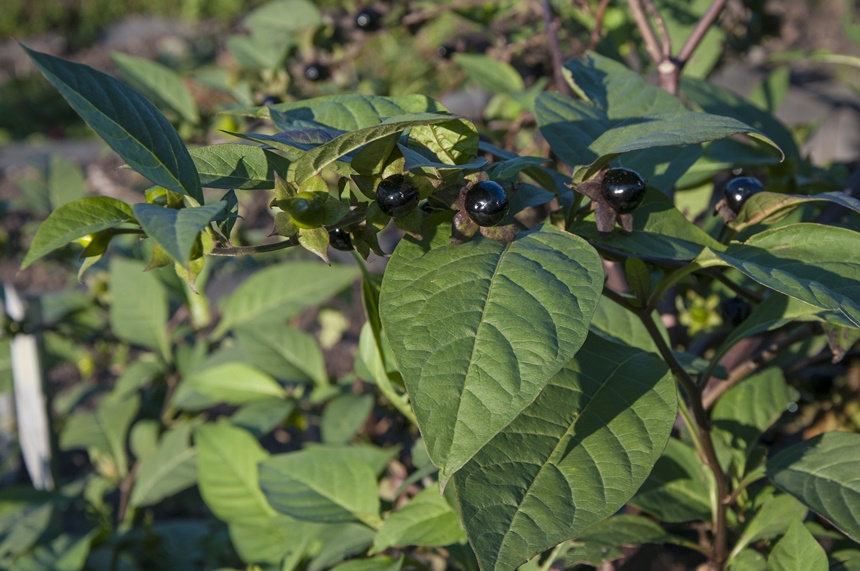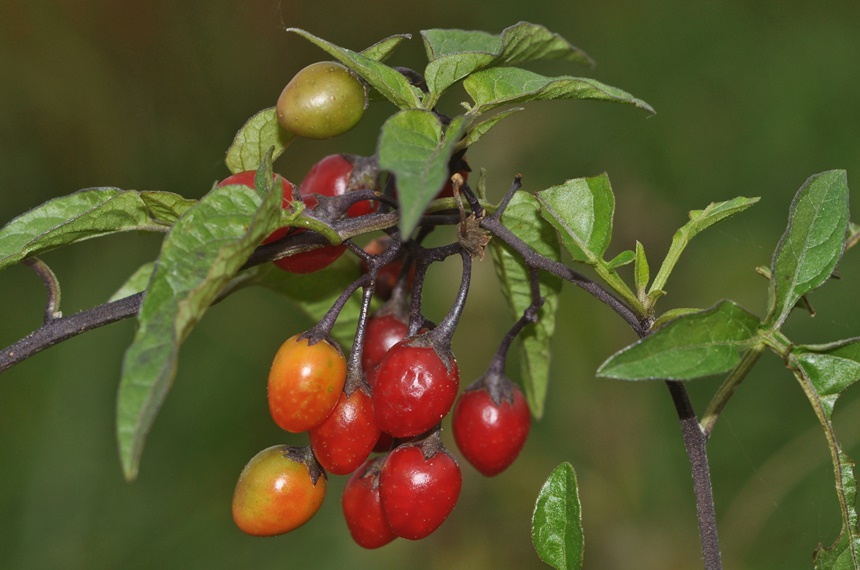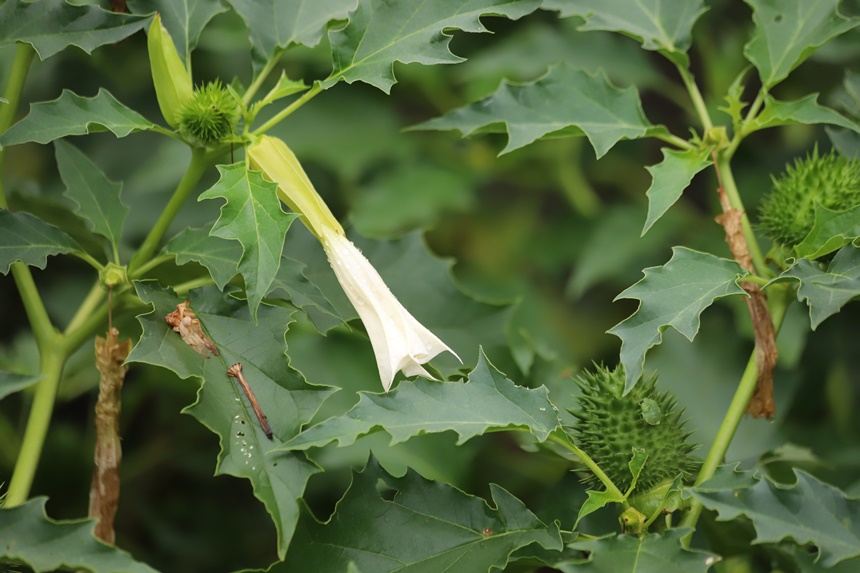We’ve all eaten nightshades, the safe and delicious kinds that go well in sandwiches and sauces. A few nightshades are deadly, dished up mainly by criminals, but most occupy a gray area between these two extremes.
Worldwide, there are around 2,700 shades of nightshade, a family known to Latin geeks as Solanaceae. The family comprises tasty crops like tomatoes, potatoes, eggplants, peppers, and tomatillos. It is also composed in part by jimsonweed and other shady characters that have wrought mayhem and death, both accidental and intentional, throughout history.
Nightshades are present on every continent save Antarctica, though Australia and South America have the greatest diversity and overall numbers of species. Tobacco is one of the more economically important nightshades, while other family members, for example petunias and Chinese lanterns, spice up our yards. The majority of nightshades are wild species, some of which have been used as sources of medicine for millennia.

It seems that the word “sumac” is preceded by “poison” in the minds of many folks, which is sad because all of the sumac we see on roadsides and in fencerows is perfectly harmless. Poison sumac, which grows in standing water, is a glossy-stemmed shrub with drooping white berries. It can cause a poison ivy-like rash, but is an uncommon species. To an even greater extent, nearly everyone assumes the term “nightshade” is always paired with the word “deadly.”

Obviously, part of the problem is one of branding. The “real” deadly nightshade (Atropa belladonna) is worthy of its name. A single berry can be fatal to a child, and eight to ten berries or just a single leaf is enough to kill an adult. Native to northwest Africa, southwest Asia, and parts of Europe, accidental poisonings sometimes occur because the deeply hooded purple berries are sweet and are therefore consumed by kids or even adults.

The plant has also been used deliberately as a way to kill political foes and unfaithful spouses. In 184 BCE, Hannibal used it to incapacitate his enemy’s troops, and the Bishop of Muenster did the same in 1672. In Shakespeare’s Macbeth, the Scottish king sends the Danish troops wine spiked with belladonna, thus defeating his enemies. Helpful tip: do not accept drinks from enemy kings or other people you do not know well.

Although deadly nightshade prefers temperate or subtropical climates, it has now spread to parts of New York, Michigan, California, Oregon, and Washington. But what most of us commonly call “deadly nightshade” is the widely naturalized red-berry bittersweet nightshade (Solanum dulcamara), the seeds of which are slightly toxic.

However, we do have a far more dangerous nightshade, jimsonweed (Datura stramonium), also known as devil’s apple or mad-apple. All parts of the plant are toxic, but especially the seeds. Native to Mexico and Central America, this coarse annual weed has very long, white, funnel-shaped flowers and bizarre-looking spiny seed-pods. Today it can be found infesting pastures and barnyards throughout most of the United States, and up into southern Canada.

All nightshades contain some amounts of atropine, scopolamine, and other alkaloid compounds. In small, controlled quantities, they have medical uses, but are extremely dangerous at larger doses. These chemicals have also been tried recreationally, with many lethal results.
Tragically, some poisonings are a result of people consuming Atropa belladonna, Datura stramonium, and other nightshades with especially high concentrations of such chemicals, in the mistaken belief they can get high. One big issue is that a plant in one location can be many times as toxic as the same species growing on a different site, and there is no way other than through lab analyses to tell.
In northern South America, especially Colombia, criminals use an extract from several tree-form nightshade species in the genus Brugmansia on their victims to commit assaults and robberies. Seeds from Brugmansia species have high levels of scopolamine, a sedative which causes anterograde and retrograde amnesia. A person given an extract of this plant in their drink would enter a state of delirium and not recall events that happened just before, as well as some time after, they were poisoned. Please refer to my valuable earlier suggestion not to drink with strangers.
We all know that potatoes that have been exposed to light will turn green. This indicates toxins like solanine have been created as a defense, and while the danger is small, potatoes with green skins should be discarded to be on the safe side. Solanine penetrates into the flesh, and removing the green portions is not enough to eliminate the risk to infants or the elderly. Likewise, there is usually little danger in consuming a small amount of tomato or potato leaf, but if a child is involved, immediately call a poison-control center.

For some individuals, eating a lot of tomatoes and other nightshades can cause or exacerbate joint pain. At this time, the exact mechanism behind this effect is not well understood.
They say you shouldn’t paint any large, diverse group with the same brush, presumably because the bristles would wear out before you could finish. So, unless it hurts, enjoy your veggie nightshades, but steer clear of the shady ones.
Become a Saturday Evening Post member and enjoy unlimited access. Subscribe now




Comments
Really fascinating feature Paul. Kind of scary, but now we know what to steer clear of. When it comes to berries (in particular) I’ll just stay with black and blueberries, from the market, thank you.